[Editor’s Note: Today’s post, by guest blogger Maj Rachel Reynolds, examines the twin dilemmas facing our U.S. Space Force (USSF) in the year 2035 — a surplus of uncertainty and a deficit of trust — and looks back at the Nation’s missed opportunities to embrace both the hard and soft power aspects of this domain during the preceding fifteen years. The Mad Scientist Initiative explored just how critical space situational awareness (SSA) is with Dr. Moriba Jah and Dr. Diane Howard‘s presentation at last year’s Disruption and the Operational Environment Conference at University of Texas at Austin (see the link to their video presentation at the end of this post). Being denied the high ground of space due to the accidental (or deliberate) collision of assets in Low Earth Orbit, with the ensuing Kessler Syndrome, is a very real and globally disruptive possibility. Given the space domain’s intrinsic and vital role in Multi-Domain Operations, Maj Reynolds’s cautionary tale is essential reading — Enjoy!]
15 Years Since the Great Pandemics
 During the first of the viral pandemics fifteen years ago, the U.S. Government operated from a trust shortfall. Similarly, the biggest challenges facing the U.S. Space Force (USSF) in 2035 continue to be uncertainty and lack of trust, which together magnify the security dilemma in our domain. After the China-India skirmish of 2027*, we aren’t lacking for theory or empirics. Instead,
During the first of the viral pandemics fifteen years ago, the U.S. Government operated from a trust shortfall. Similarly, the biggest challenges facing the U.S. Space Force (USSF) in 2035 continue to be uncertainty and lack of trust, which together magnify the security dilemma in our domain. After the China-India skirmish of 2027*, we aren’t lacking for theory or empirics. Instead, 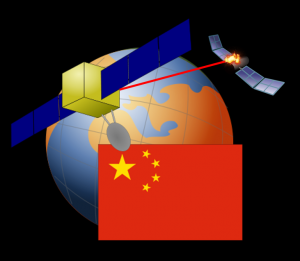 the persistent lack of space situational awareness (SSA), the increasing weaponization of space, America’s refusal to participate in international agreements, and the country’s aggressive policy of ‘limited’ war in space have each contributed, over the last fifteen years, to a surplus of uncertainty and a deficit of trust.
the persistent lack of space situational awareness (SSA), the increasing weaponization of space, America’s refusal to participate in international agreements, and the country’s aggressive policy of ‘limited’ war in space have each contributed, over the last fifteen years, to a surplus of uncertainty and a deficit of trust.
A Surplus of Uncertainty
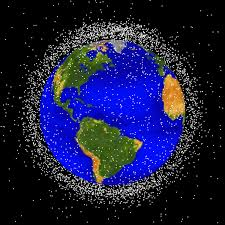 By the end of the first two decades of the 21st century, the US had determined not to share SSA data beyond its own national security establishment, overtasking the USSF with SSA of all orbital objects. Unsurprisingly, the kinds of accidents predicted to occur because of incompletely shared SSA data, inevitably did occur—the 2024 collision of the Chasqui-I** with unlabeled micro-debris that nearly resulted in a Kessler Cascade*** is the clearest example.1 Additionally, the complexity and magnitude of the SSA mission today exceeds the original scope of the USSF mission set. Researchers like Joshua Hampson recommended years ago that a non-governmental, multi-stakeholder organization would be best suited for the SSA mission.2 Instead, the USSF alienated other countries because it focused solely on national security interests. Without the redundancy such partnerships afford, the USSF struggles to maintain the persistent, watchful eye that the SSA mission demands.3
By the end of the first two decades of the 21st century, the US had determined not to share SSA data beyond its own national security establishment, overtasking the USSF with SSA of all orbital objects. Unsurprisingly, the kinds of accidents predicted to occur because of incompletely shared SSA data, inevitably did occur—the 2024 collision of the Chasqui-I** with unlabeled micro-debris that nearly resulted in a Kessler Cascade*** is the clearest example.1 Additionally, the complexity and magnitude of the SSA mission today exceeds the original scope of the USSF mission set. Researchers like Joshua Hampson recommended years ago that a non-governmental, multi-stakeholder organization would be best suited for the SSA mission.2 Instead, the USSF alienated other countries because it focused solely on national security interests. Without the redundancy such partnerships afford, the USSF struggles to maintain the persistent, watchful eye that the SSA mission demands.3
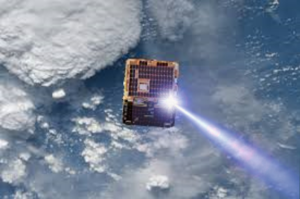 The growing weaponization of space has further heightened uncertainty about actors’ capabilities in space. ‘Space sanctuarians’ at the end of the last century were right: hawkish strategists overstated adversarial capabilities throughout the early 2000s and 2010s.4 Competition-overestimation bias led to Washington’s proliferation of language on space weaponization and, eventually, to its emplacement of space-to-space and space-to-ground weapons in orbit. Other countries did not recognize America’s benevolent intent in fielding these weapons as “a global asset and a public good.”5 Instead, the international community’s increasing unease about which satellites were weaponized and which were not only exacerbated already high levels of uncertainty in space.
The growing weaponization of space has further heightened uncertainty about actors’ capabilities in space. ‘Space sanctuarians’ at the end of the last century were right: hawkish strategists overstated adversarial capabilities throughout the early 2000s and 2010s.4 Competition-overestimation bias led to Washington’s proliferation of language on space weaponization and, eventually, to its emplacement of space-to-space and space-to-ground weapons in orbit. Other countries did not recognize America’s benevolent intent in fielding these weapons as “a global asset and a public good.”5 Instead, the international community’s increasing unease about which satellites were weaponized and which were not only exacerbated already high levels of uncertainty in space.
A Deficit of Trust
 The lack of trust in the space domain today stems from a refusal to participate in international space agreements as well as a disastrous limited war policy for space. America’s conspicuous absence from international space treaties in the opening decades of this century made it “difficult to effectively incorporate [Trust and Confidence Building Measures (TCBMs)]” into foreign relations.6 The US had multiple chances to lead, but wasted them: one, “analogous to the air transport agreements” between the EU and Canada; another, the thwarted rejuvenation of “NASA relations with Russia;” still another, the International Code of Conduct—abandoned due to fears about its “arms-control” aims.7 With each non-agreement, the US perpetuated the lack of trust between states in space.
The lack of trust in the space domain today stems from a refusal to participate in international space agreements as well as a disastrous limited war policy for space. America’s conspicuous absence from international space treaties in the opening decades of this century made it “difficult to effectively incorporate [Trust and Confidence Building Measures (TCBMs)]” into foreign relations.6 The US had multiple chances to lead, but wasted them: one, “analogous to the air transport agreements” between the EU and Canada; another, the thwarted rejuvenation of “NASA relations with Russia;” still another, the International Code of Conduct—abandoned due to fears about its “arms-control” aims.7 With each non-agreement, the US perpetuated the lack of trust between states in space.
Adopting a limited war policy for space further compounded this lack of trust. In a mid-20th century critique of Eisenhower’s “all-or-nothing” policy regarding war, Henry Kissinger proposed a “flexible response” alternative.8 Likewise, support for 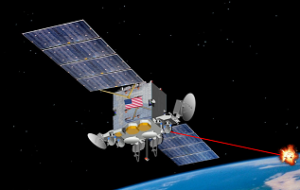 a limited war policy in space has grown over the last 20 years. The fundamental flaw of a flexible or limited response then, as now, is the ability of a nation to surrender when it still retains powerful weapons. As Senator Fulbright presciently argued in 1969, “if we have [a capability], we will be tempted to [use it].”9 Theoretical concerns aren’t the only problem. Indeed, in a way, the policy accomplished what it aimed to do: it increased the credibility of a US kinetic response to aggression in space, and it provided for “segmentally and discriminately rather than totally” responding to attacks.10 Problematically, however, those attacks never came. The US never had an opportunity to demonstrate the restraint it claimed it would exercise. Thus, the country had only its reputation as an indicator of its trustworthiness. The crucial missing piece of the nation’s limited war strategy was to have “[developed] plausible norms of limitation.”11 Without an empirical example of limited action or the necessary precedents, the US never built those vital “plausible norms.”
a limited war policy in space has grown over the last 20 years. The fundamental flaw of a flexible or limited response then, as now, is the ability of a nation to surrender when it still retains powerful weapons. As Senator Fulbright presciently argued in 1969, “if we have [a capability], we will be tempted to [use it].”9 Theoretical concerns aren’t the only problem. Indeed, in a way, the policy accomplished what it aimed to do: it increased the credibility of a US kinetic response to aggression in space, and it provided for “segmentally and discriminately rather than totally” responding to attacks.10 Problematically, however, those attacks never came. The US never had an opportunity to demonstrate the restraint it claimed it would exercise. Thus, the country had only its reputation as an indicator of its trustworthiness. The crucial missing piece of the nation’s limited war strategy was to have “[developed] plausible norms of limitation.”11 Without an empirical example of limited action or the necessary precedents, the US never built those vital “plausible norms.”
What Could Have Been and What Yet May Be
If we could rewind the last fifteen years of US chest-thumping in space and instead adopt the mindset “that space power has both hard and soft aspects,” the USSF’s operating environment might not be one in which “the US [has] largely [abandoned] the diplomatic element of national power.”12 Three policy goals over the preceding fifteen years could have alleviated the challenges confronting us today: (1) increased SSA sharing, (2) pursuit of international agreements and TCBMs, and (3) prioritization of defense with radical transparency.
Sadly, the year is no longer 2020. Options today are limited and less than ideal, but with clear communication and deep commitment, the following prescription may pull us back from the brink: (1) pursuing cross-domain détente, (2) establishing stricter law of armed conflict (LOAC) guidance for space, and—as a last resort if the preceding options fail—(3) developing an Eisenhower-style Single Integrated Operational Plan (SIOP) for space.
First, military activity in space “can achieve détente if it is used to build trust in other domains.”13 To that end, we should consider allocating USSF assets to perform humanitarian aid in terrestrial crises or to assist international partners with terrestrial communications and ISR needs. The use of orbital assets for positive cross-domain purposes may ease tensions in the space domain. Such demonstrations, incidentally, also signal key deterrence components of credibility and capability, but in a benign way. Next, commanders and legal advisors should strengthen Rules of Engagement and Escalation of Force guidance—hallmarks of adherence to LOAC and signals of morality. Strictures such as decreased “duration of strikes” and minimized “scale [of] offensive action” would signal that  US military action in space is tied to international norms. They may even pave the way for future arms reduction agreements. Finally, we must consider an Eisenhower-style SIOP as a last resort. A reversal of the limited war policy, it would threaten to flex the full might of US offensive space weaponry in response to provocation without a ‘safety release valve’, ironically ensuring we never have to use it. This is by far the least desirable option; however, it is one of the few we still have given the multitude of off-ramps the US has passed up.
US military action in space is tied to international norms. They may even pave the way for future arms reduction agreements. Finally, we must consider an Eisenhower-style SIOP as a last resort. A reversal of the limited war policy, it would threaten to flex the full might of US offensive space weaponry in response to provocation without a ‘safety release valve’, ironically ensuring we never have to use it. This is by far the least desirable option; however, it is one of the few we still have given the multitude of off-ramps the US has passed up.
The Best Time to Invest Was Yesterday; The Next Best Time Is Today
If the American people could have gone back just a few short months in early 2020, they might have averted the catastrophe that multiple waves of pandemic wrought on our country. If space professionals could go back to that same year and change our approach to their domain, perhaps 2035’s security dilemma would be less severe. There are still opportunities for a trust stimulus and a recession of uncertainty, but none as strong as ones we had fifteen years ago. The best option today would be to go back to a time when we could eliminate the uncertainty surplus and instead invest in trust.
If you enjoyed this post, check out:
-
- Space: Challenges and Opportunities
- Ethics, Morals, and Legal Implications
- Star Wars 2050 and The Final Frontier: Directed Energy Applications in Outer Space, by Marie Murphy
- Space Traffic Management and Situational Awareness video presentation by Dr. Moriba Jah and Dr. Diane Howard, at the Mad Scientist Disruption and the Operational Environment Conference, University of Texas at Austin, Day 2, April 25, 2019
- Dr. Moriba Jah on What Does the Future Hold for the US Military in Space? podcast hosted by our colleagues at Modern War Institute
Rachel Reynolds is a major in the U.S. Air Force; her career in cyber operations has supported the NATO nuclear surety mission, theater air control in Afghanistan and the Arabian Gulf, and cyber and command & control enlisted training. She is currently a graduate student at the School of Advanced Air and Space Studies at Maxwell Air Force Base in Alabama.
Disclaimer: The views expressed in this blog post are those of the author, and do not necessarily reflect those of the Department of Defense, Department of the Air Force, Department of the Army, Army Futures Command (AFC), or Training and Doctrine Command (TRADOC).
* The first in-orbit EMI battle. The ensuing months of “Kepler Sweeps” crippled numerous ASEAN satellites (proxy targets of the radical Hindu National Party, testing the resolve of the CCP’s extended deterrence).
** A Peruvian educational satellite that lost contact with its ground controllers just before its 10th birthday.
*** And might have but for the efforts of the European Space Agency’s ClearSpace-6 mission.
1 Brian D. Green, “Space Situational Awareness Data Sharing: Safety Tool or Security Threat,” Air Force Law Review 75 (2016): 43, 87.
2 Joshua Hampson, “The Future of Space Commercialization” (Niskanen Center, January 25, 2017), 26.
3 Mariel Borowitz, “Strategic Implications of the Proliferation of Space Situational Awareness Technology and Information: Lessons Learned from the Remote Sensing Sector,” Space Policy 47 (2019): 25.
4 Bruce M. DeBlois, “Space Sanctuary: A Viable National Strategy,” Airpower Journal 4 (1998): 47-48.
5 Everett C. Dolman, “New Frontiers, Old Realities,” Strategic Studies Quarterly 6, no. 1 (Spring 2012): 94.
6 United Nations, “Treaty on Principles Governing the Activities of States in the Exploration and Use of Outer Space, Including the Moon and Other Celestial Bodies” (Treaties and Other International Acts Series 6347, January 27, 1967).
Aleksander M. Lubojemski, “Satellites and the Security Dilemma,” Astropolitics 7, no. 2 (2019): 135.
7 Brian D. Green, “Space Situational Awareness Data Sharing: Safety Tool or Security Threat,” Air Force Law Review 75 (2016): 124-8.
8 Campbell Craig, Destroying the Village: Eisenhower and Thermonuclear War (New York: Columbia University Press, 1998), 112.
9 William D. Hartung, The Prophets of War: Lockheed Martin and the Making of the Military-Industrial Complex (New York: Nation Books, 2011) 70.
10 Elbridge Colby, From Sanctuary to Battlefield: A Framework for a U.S. Defense and Deterrence Strategy for Space, 2016, 18.
11 Elbridge Colby, From Sanctuary to Battlefield: A Framework for a U.S. Defense and Deterrence Strategy for Space, 2016, 19.
12 Brad Townsend, “Space Power and the Foundations of an Independent Space Force,” Air & Space Power Journal 4 (2019): 20, emphasis added.
13 Sonny Roberts, Domain Mirroring: Reflections of Human Behavior from Land, Sea, Air, Space, and Cyberspace (Princeton, NJ: Princeton University Press, 2033) 298.

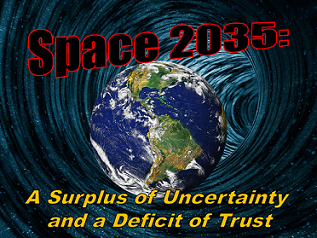


This article makes a lot of assumptions about the response to this proposed strategy which need to be included in this proposal. Fine for the other space programs outside Russia, China, etc. and those who support use of space for good. If all of the countries support this open and connected and treaty driven strategy but Russia, China, Iran, etc. are not onboard or held accountable then I think it is all for naught. The idea of cooperation and the management of “space trash” and unidentified items is important but I suspect the cloud of stuff in space benefits the chaos and uncertainty that some countries want. Good idea to get more international buy-in but the results will most likely like the poor results of the UN and the WHO. This just my opinion based on watching and seeing what has happened starting with 1975. The will and dedication by America and other countries is not strong enough yet to tackle this problem but glad the author at least proposed a possible solution.